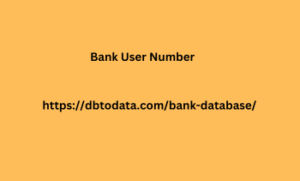Making a website hosted on localhost accessible to the public involves exposing your local server to the internet. This process typically requires configuring your router, setting up port forwarding, and possibly using dynamic DNS services. Here’s a step-by-step guide on how to make your localhost website public:
Ensure that your website is running on your local machine using a web server software like Apache, Nginx, or running your application server like Tomcat, Node.js, or Django.
2. Determine Your Local IP Address:
Find out the local IP address of your machine where the web server is running. On Windows, you can use ipconfig command in Command Prompt, and on macOS or Linux, you can use ifconfig command in Terminal.
3. Configure Router Port Forwarding:
Access your router’s settings page through a web browser. The Bank User Number router’s IP address is often something like 192.168.1.1 or 192.168.0.1, and you may need to consult your router’s manual or manufacturer’s website for instructions on accessing it.
Once logged in, find the port forwarding or virtual server settings. Add a new port forwarding rule to forward incoming traffic on a specific port (e.g., 80 for HTTP or 443 for HTTPS) to the local IP address and port where your web server is running.
4. Obtain Your Public IP Address:
Find out your public IP address, which is the address that Canada WhatsApp Number List the outside world uses to communicate with your router. You can check your public IP address by searching “What is my IP” in a search engine.
5. Access Your Website:
Use your public IP address to access your website from outside your local network. Enter your public IP address in a web browser followed by the port number you forwarded (e.g., . Your website should now be accessible to the public.
6. Dynamic DNS (Optional):
If your public IP address changes frequently (as is often the case with residential internet connections), you may want to use a Dynamic DNS (DDNS) service. DDNS associates a domain name with your changing IP address, allowing you to access your website using a domain name instead of an IP address.
Sign up for a DDNS service, configure your router to update the DDNS service with your current IP address automatically, and then use the assigned domain name to access your website.
Security Considerations:
- Ensure your web server and applications are secure to prevent unauthorized access or attacks.
- Use HTTPS to encrypt data transmitted between clients and your server.
- Regularly update your router’s firmware and use strong, unique passwords to prevent unauthorized access to your network.
By following these steps, you can make your localhost website accessible to the public, allowing others to view and interact with your website from anywhere on the internet.




